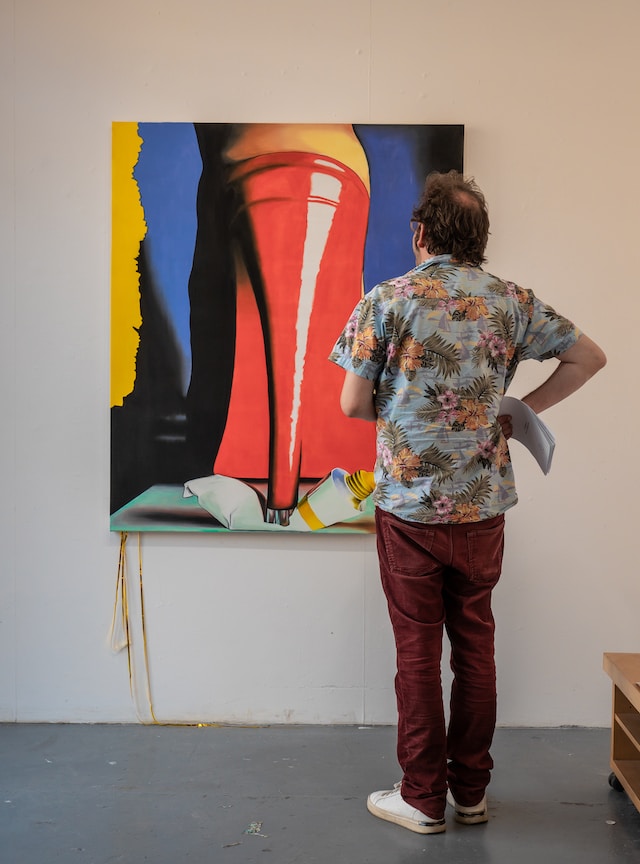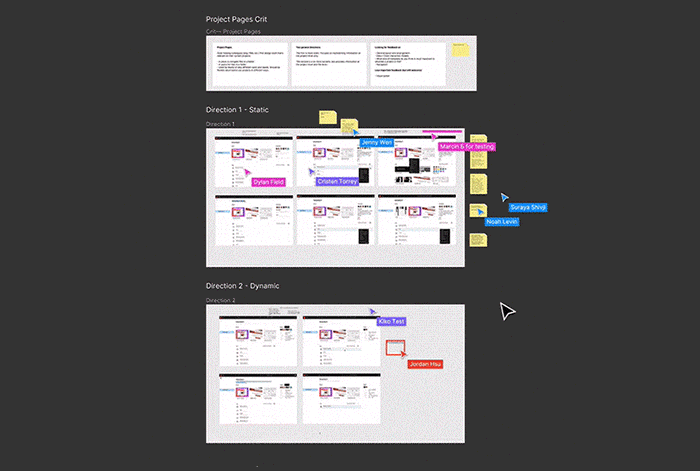
Photo by Ákos Nemes on Unsplash
There’s nothing worse than people looking over your shoulder at your work and commenting on the designs open on the screen. If you are a designer, you know the feeling and have experienced it at least once in your career. From your manager or colleagues having a sneak peek at your designs and commenting when no one asked them to. The worst is when comments are from someone who has zero design expertise. The main problem is that we all have eyes to see what’s on the screen and a taste (allegedly!), and we feel entitled to give our opinion.
This is the feeling I experienced the first time I participated in a design critique with my team. As a new designer, I was terrified by the idea, and before the critique, I spent endless nights trying to refine my designs over and over to make them perfect. Looking back at myself, my attitude had two main flaws.
First, I was naive enough to think that perfection existed. It doesn’t! If you aim for perfection, you aim for mental insanity. Perfection is very relative to the work you are doing, how it has been briefed to you and the knowledge you acquire about the problem, which in our world is always limited due to time constraints, but that’s for another blog post.
The second problem was with my attitude to a critique. The feeling of someone judging my designs made me feel like I was at school and teachers were going to give me a grade on my homework. After my first critique, and maybe quite a few critiques after, I felt like a terrible designer and a failure. Why couldn’t I work out the design by myself? Why didn’t I think of that or the other solution suggested by other designers?
I have been a designer for over 10 years, and thinking about those moments makes me smile. It is such a natural feeling to feel judged in those environments, and sometimes if the settings and premises of a design critique aren’t well set, that’s probably right. However, it’s worth also seeing further than that. If people provide feedback on your designs, it doesn’t make you a bad designer. Sometimes when you are ‘inside the designs’, creating a million and one screens and pieces many journeys together, it’s much easier to forget something or feel solution fatigue, like you can’t find any more ways to solve a problem. Someone with an outside perspective can be much quicker to spot opportunities or flaws, and that’s fine. They have a huge head-start, as you have already unravelled most of the problem.
Opening yourself to critiques from other designers is opening yourself to growth. It helps create a collaborative attitude in the team which drives for overall better results. This is not just for junior designers but also seasoned ones.
I see some similarities with how engineers perform regular code reviews, which help with knowledge sharing and improve the quality of the products. The Palantir blog offers a great perspective and many links to explore more on the topic.
So, design critiques are one of the most useful activities in a design team. Whether your team or company is big or small, running design critiques should be central to any team.
My experience
I recently experimented with a new way of running a design critique inspired by Noah Levin from Figma: a silent critique. You can find more about the different techniques Figma experiments with here.

From Noah Levin's article Design Critiques at Figma
To give you more context, I lead a pretty small team, and we usually have a great context of what everyone is working on. Therefore, design critiques are informal discussions about challenges we have in design, and we all chip in with ideas, inspirations and advice. We love it, and I keep receiving great feedback from the team on how refreshing it is to work ‘six hands’ on designs. We can let go of our egos and shoot for the best solution.
However, I wanted to try something different this time to ensure I didn’t influence other designers while exposing my problems and challenges. The results from the silent design critique were completely different from our usual critiques when we worked together on the same canvas. This made me realise how important it is to think about the format of meetings, as it can radically change outcomes.
How I ran a silent design critique
Running a silent design critique requires more preparation than just sending your teammates to Figma and taking them through some of the challenges that you are facing. For my session, I aimed for quantity, aka I wanted to gather as many comments as possible and ensure that we didn’t influence each other.
I created a separate section on my Figma canvas, I wrote a clear statement about the problem I was trying to solve and listed three different solutions I explored. Then, I clearly stated the ask from each designer: to fill the canvas with comments.
In complete silence, each designer had time to familiarise themselves with the problem statement and then fire sticky notes left, right and centre. Once everyone had no more comments to add to the designs, I asked them to point out one thing I should consider exploring further and why. That’s all!
Why I loved it
- It allowed me to gather a ton of feedback from other designers by directly commenting on the designs in Figma.
- And it makes the critique even more contextual, with comments already saved for the receiver to review.
- It’s perfect when we are all working remotely, and you can quickly jump onto a Figma file.
- People can have more time to think things through.
- As a receiver, I can look through comments as they are typed and have time to think about what I might want to ask at the end.
- I cannot influence any of the comments as I do not have the opportunity to reply or get into the conversation until the very end.
I haven’t experimented with many critiques techniques, but I don’t think that’s the essence of it. It’s not about how jazzy the critique is; what’s most important is to set the basis of good feedback in the team to enhance collaboration and trust.
